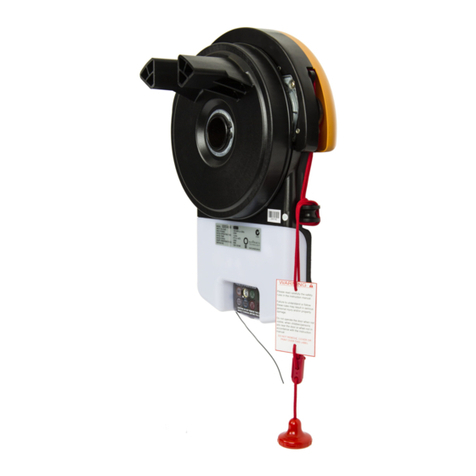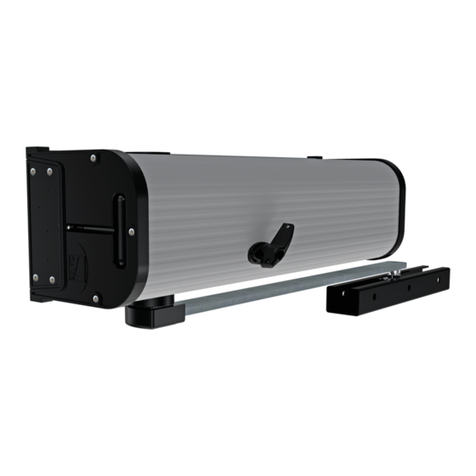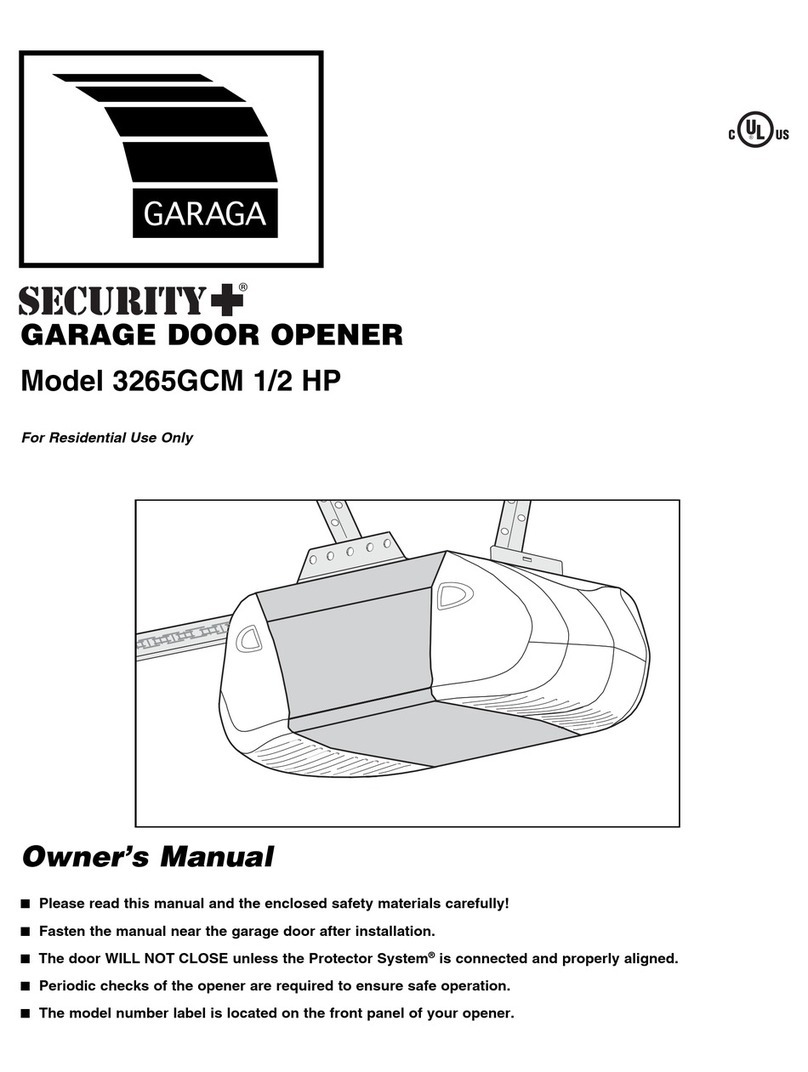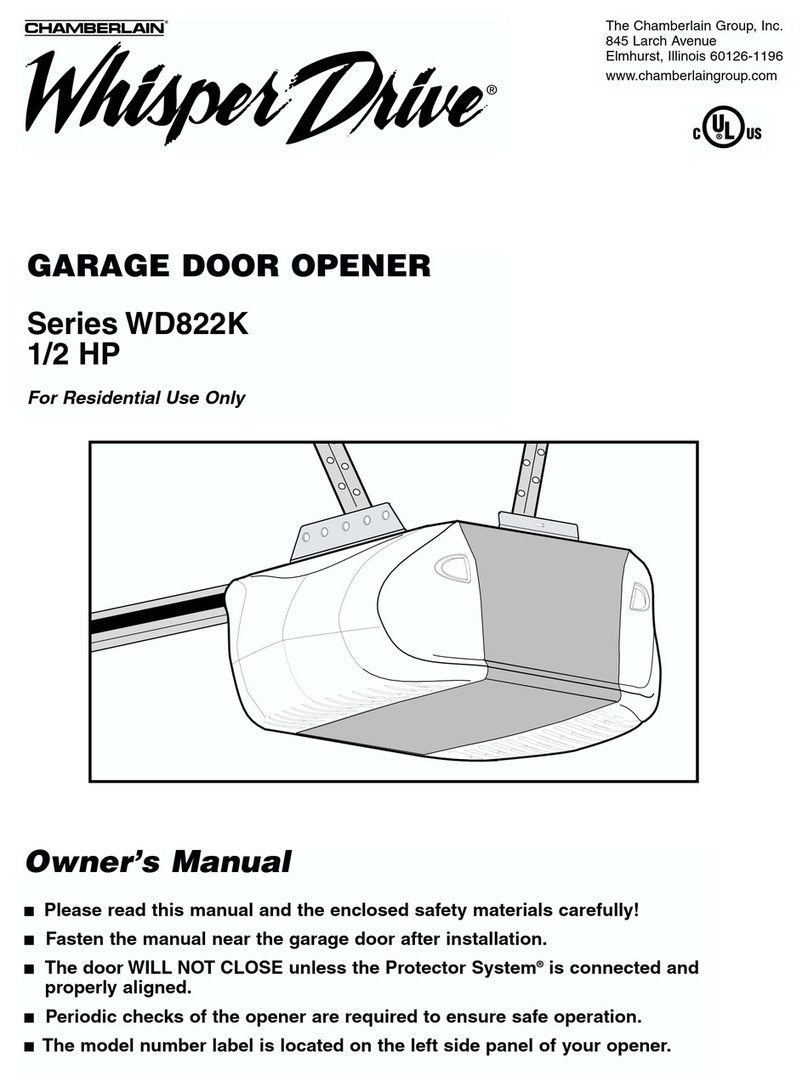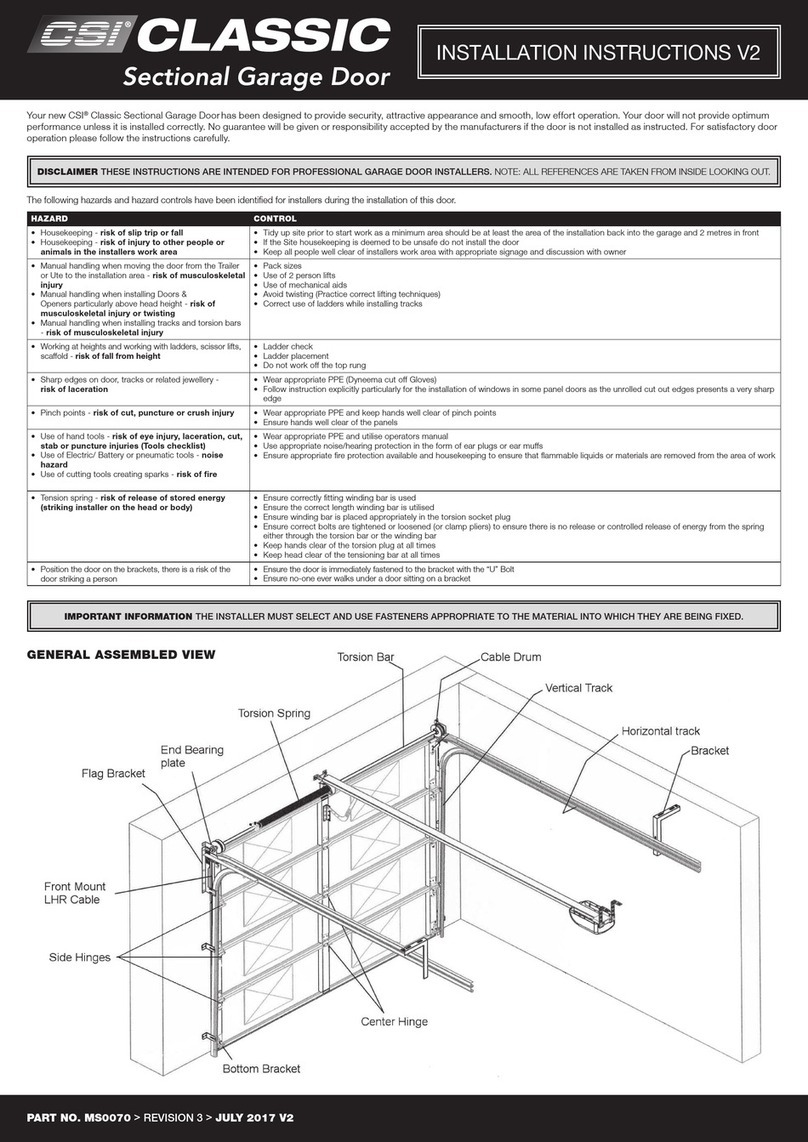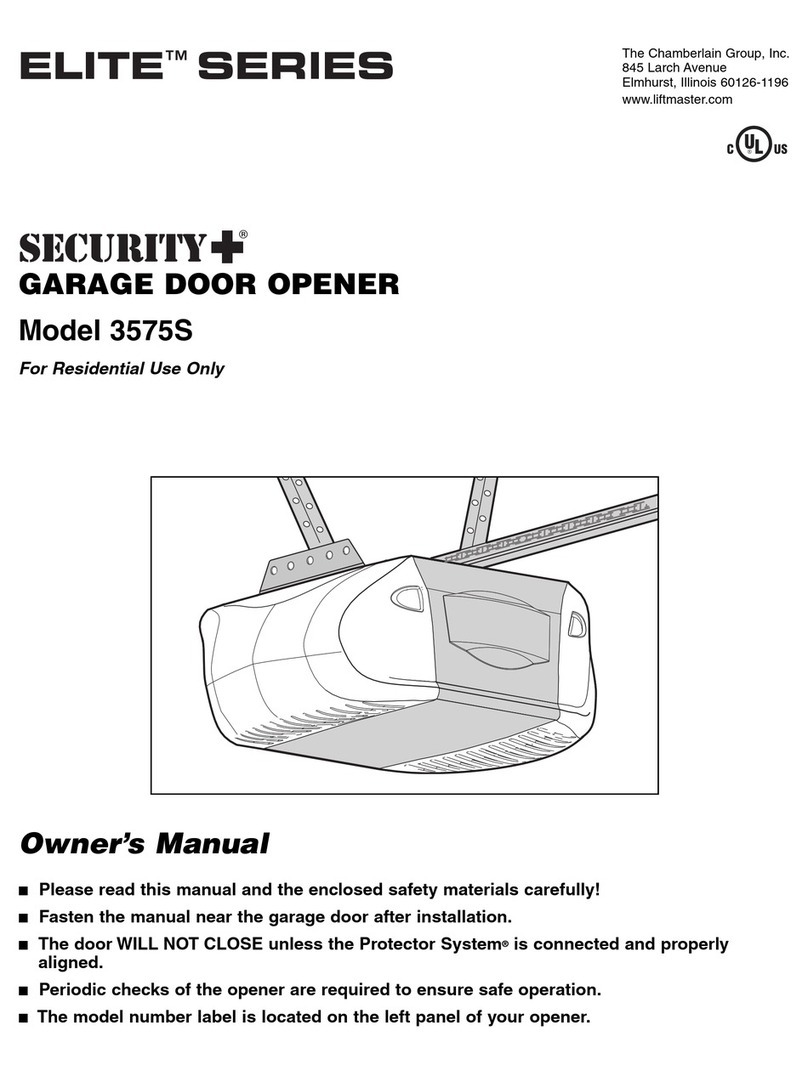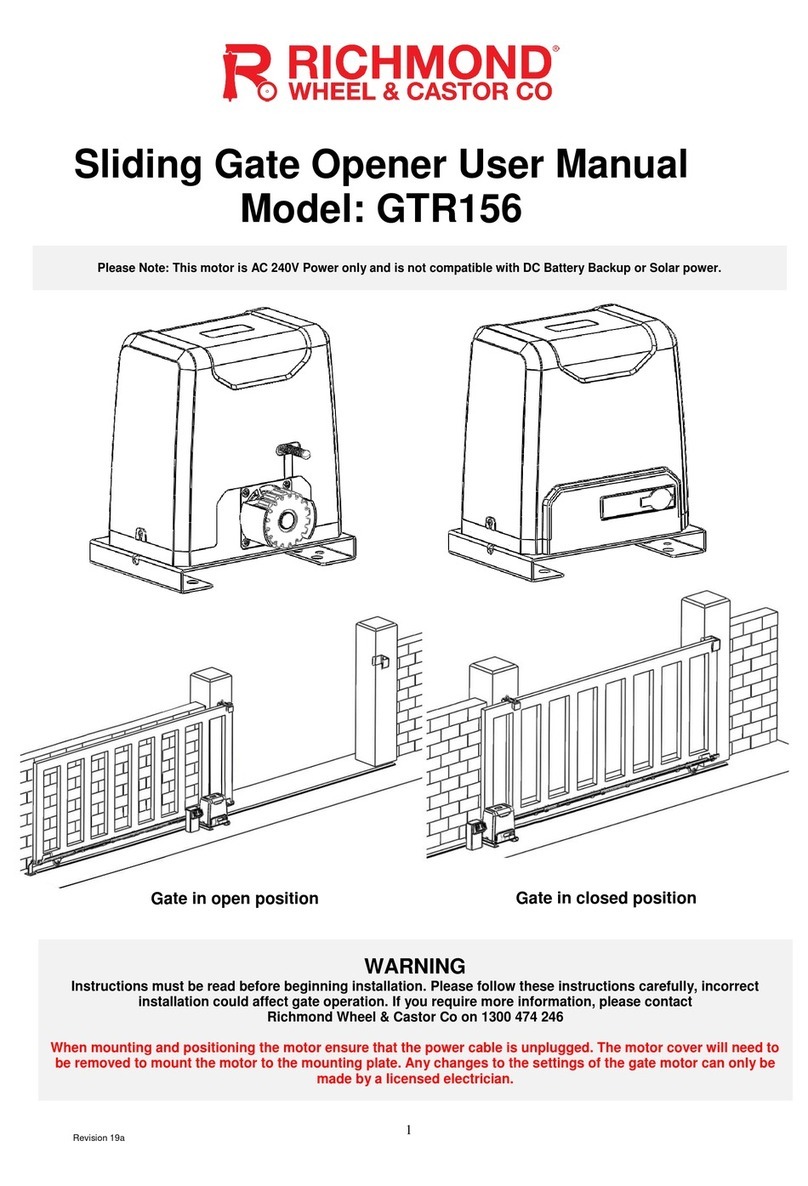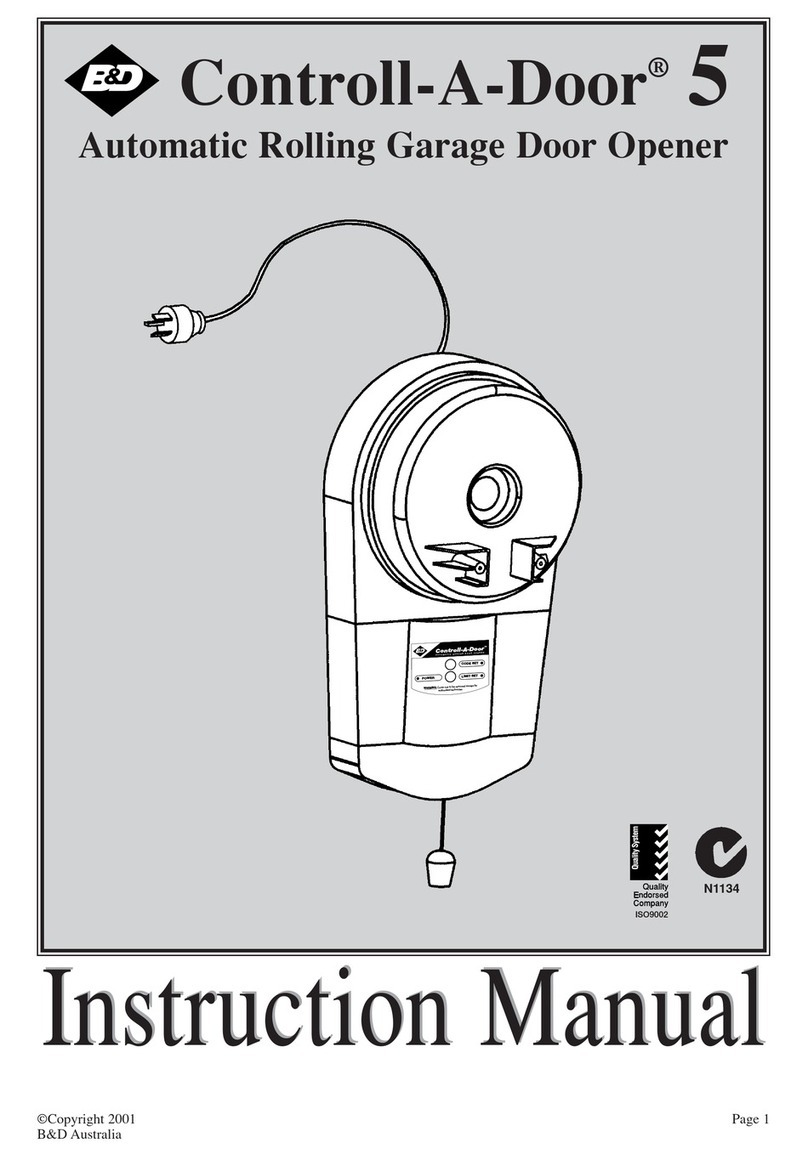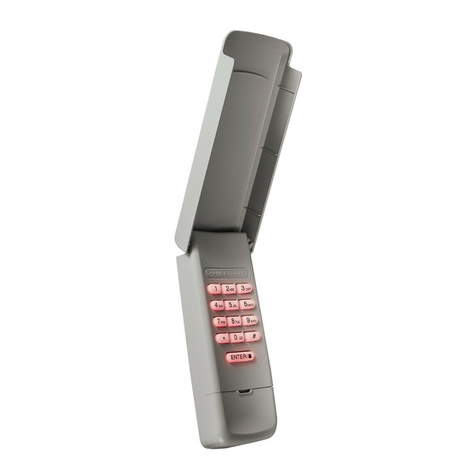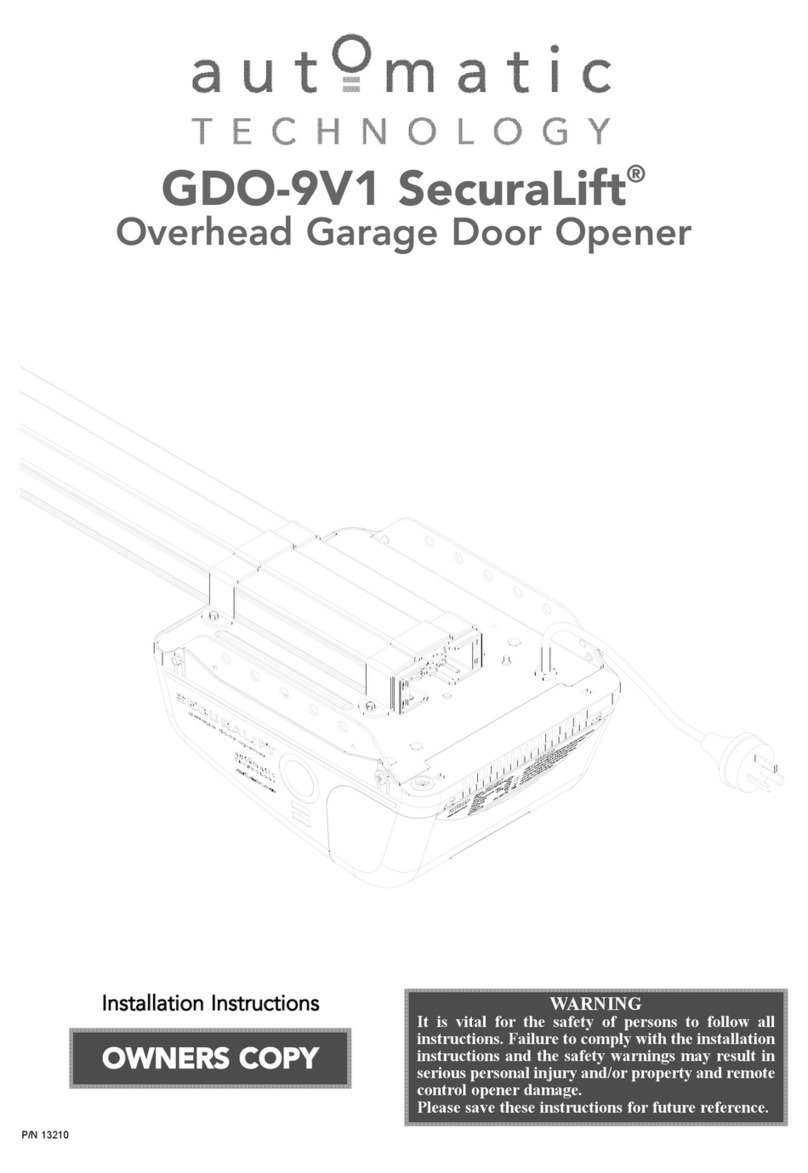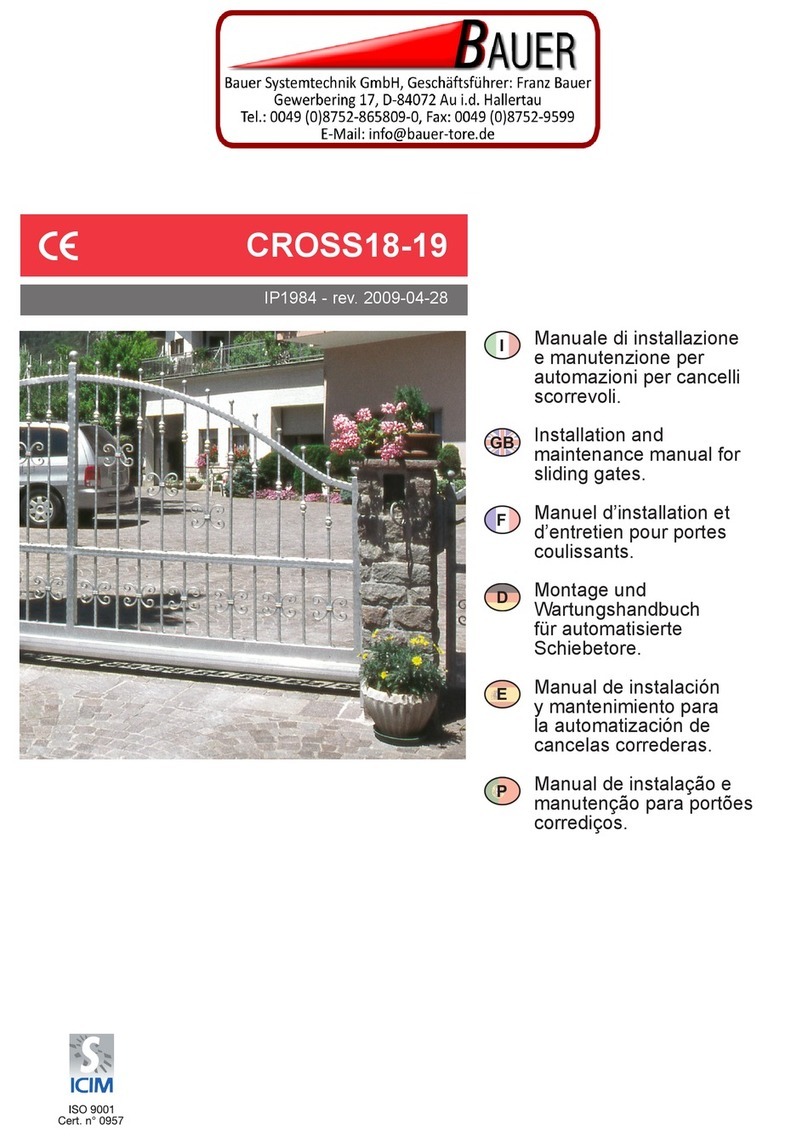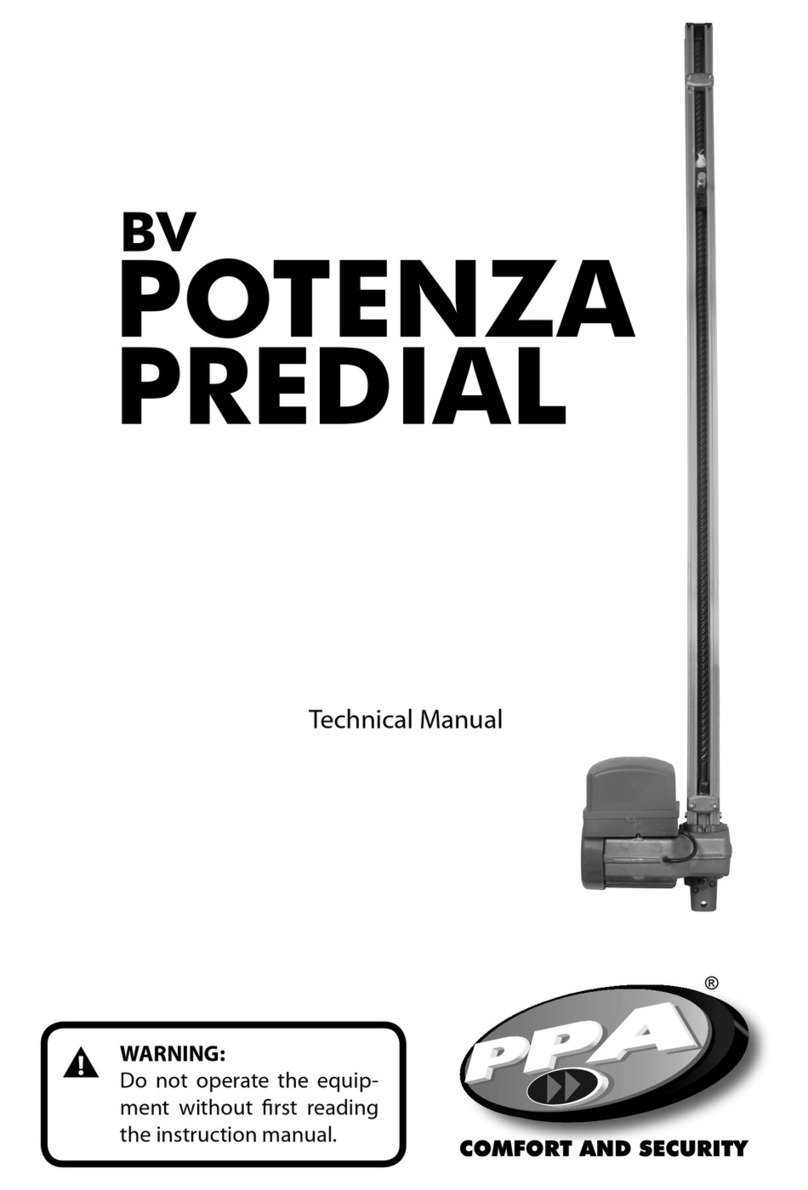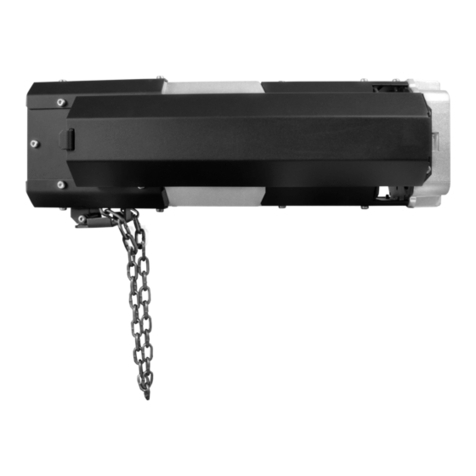18 19
CODE
PRINTED
ON DISPLAY FUNCTION
F08 Closing limit switch.
F09 Door model (Bona, Flash, Tore, Avanti, Replacement and Pivoting).
F10 Sensibility of anti-smashing at closing (force at closing).
F11 Enables or disables Anti Panic.
F12 Function to choose whether the door should stop when there is na anti panic signal
or if should open at a slower speed.
F13 Filter time for photocell command input and “Radar 1”.
F14 Limit switch speed.
F15 Applies the factory settings.
F16 Deceleration at closing.
F17 Reserved.
F18 Anti panic opening speed.
F19 Forçe during opening.
F20 Closing limit switch force (closing ensure).
F21 Enables or disables “Anti-wind” function (more used in the pivoting model).
F22 Acceleration / deceleration at opening.
F23 On/Off Pulse on the closing lock.
F24 Enable inverted pause.
F25 Wait time to start the engine after the lock has been activated.
F26 On/Off automatic opening when the door is manually moved in the opening
direction
Out Exit the programming menu.
To navigate through the programming menu, simply press the SHIFT (+) button
to incremented or (-) button to decrease until find the desired function, and then
press OK to enter the function. Each function has own specific settings that can
be changed by the SHIFT (+) button or (-) button.
When finish changing, press OK again and then the value is saved and the menu
returns to the functions and can navigate through again.
See the table below for the meaning of each existing configuration for the functions.
FUNCTION EXISTING CONFIGURATION
FOR THIS FUNCTION MEANING OF CONFIGURATION
F01 Sau/t00 to t99 Semi-automatic mode (SA) or pause time in seconds
[s].
F02 tof or t01 to t99
Disables the operation of electromagnetic lock (tof) or
enable locking and the activation time of it (t01 to t99)
in milliseconds, t01 = 0,1s.
F03 t00 to t99 Time the garage light comes on after the door is
closed (time in seconds [s]).
F04 rst or nrt Delete the route (rst) or do not delete the route (nrt).
F05
001 to 060 for Tore and
Replacement models, up to
090 for the Flash and Bona
models.
Opening speed, 001 to 090 [Hz].
F06 001 to 090 Closing speed 001 to 090 [Hz].
F07 001 to 099 Openign limit switch, 001 (minor), 099 (higher limit
switch).
F08 001 to 099 Closing limit switch, 01 (minor), 99 (higher limit
switch).
F09
FLA, bon, tor, rEP, AuA or PIu
Door model: Flash (FLA: larger motor with encoder
hall), Bona (bon: smaller motor with encoder
hall), Tore (tor: smaller motor with hall encoder),
Replacement (rEP: smaller motor with optical
encoder), Avanti AuA: medium motor with Hall
encoder) and Pivot (PIu).
F10 A10 to A50
Sensitivity of the anti-smash in the closing, the smaller
the value, the smaller the force. Higher the value, the
greater the force.
F11 dAP or EAP
Enable (EAP) or disable (dAP) anti-panic.
ATTENTION: This function should only be enabled if
the door is the mechanical anti panic system.
F12 oPE to Sto
Set the anti-panic function to open the door (ope)
or stop the door (sto) when receiving an anti-panic
signal.
F13 t01 or t99
Waiting time to recognize that there is no photocell
command and "radar 1", this function is used when
the door is commanded by access control by cards,
time x 100ms (one hundred milliseconds) [ms].
F14 001 to 015 Limit switch speed [Hz].
F15 ndE or dEF Applies factory values (dF) or does not apply (nd).
F16 001 or 099
Deceleration at closing [Hz / s], the lower the
smoother the motion and the greater the closing limit
switch.
F17 Reserved.
